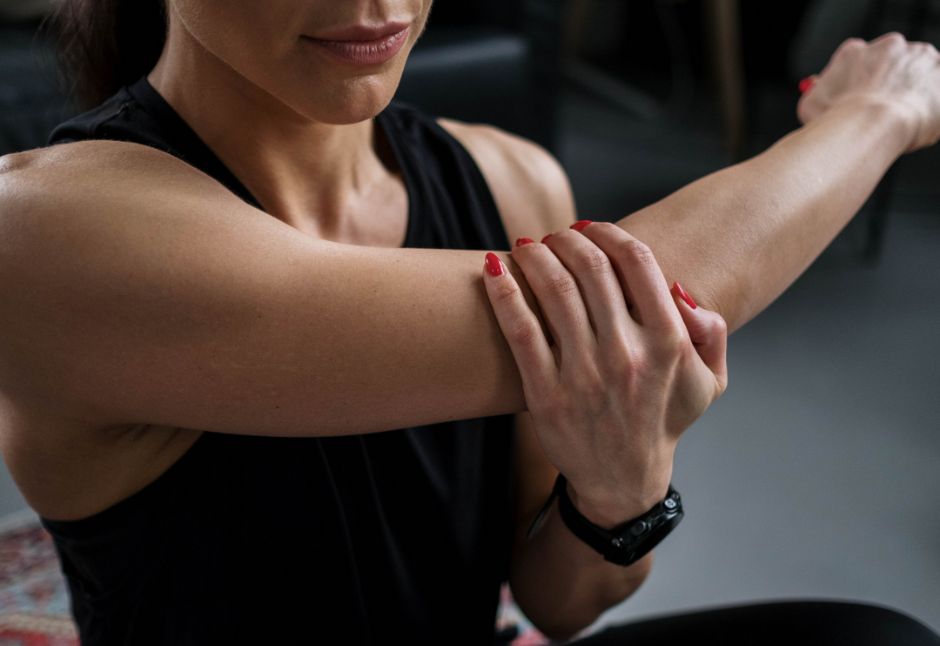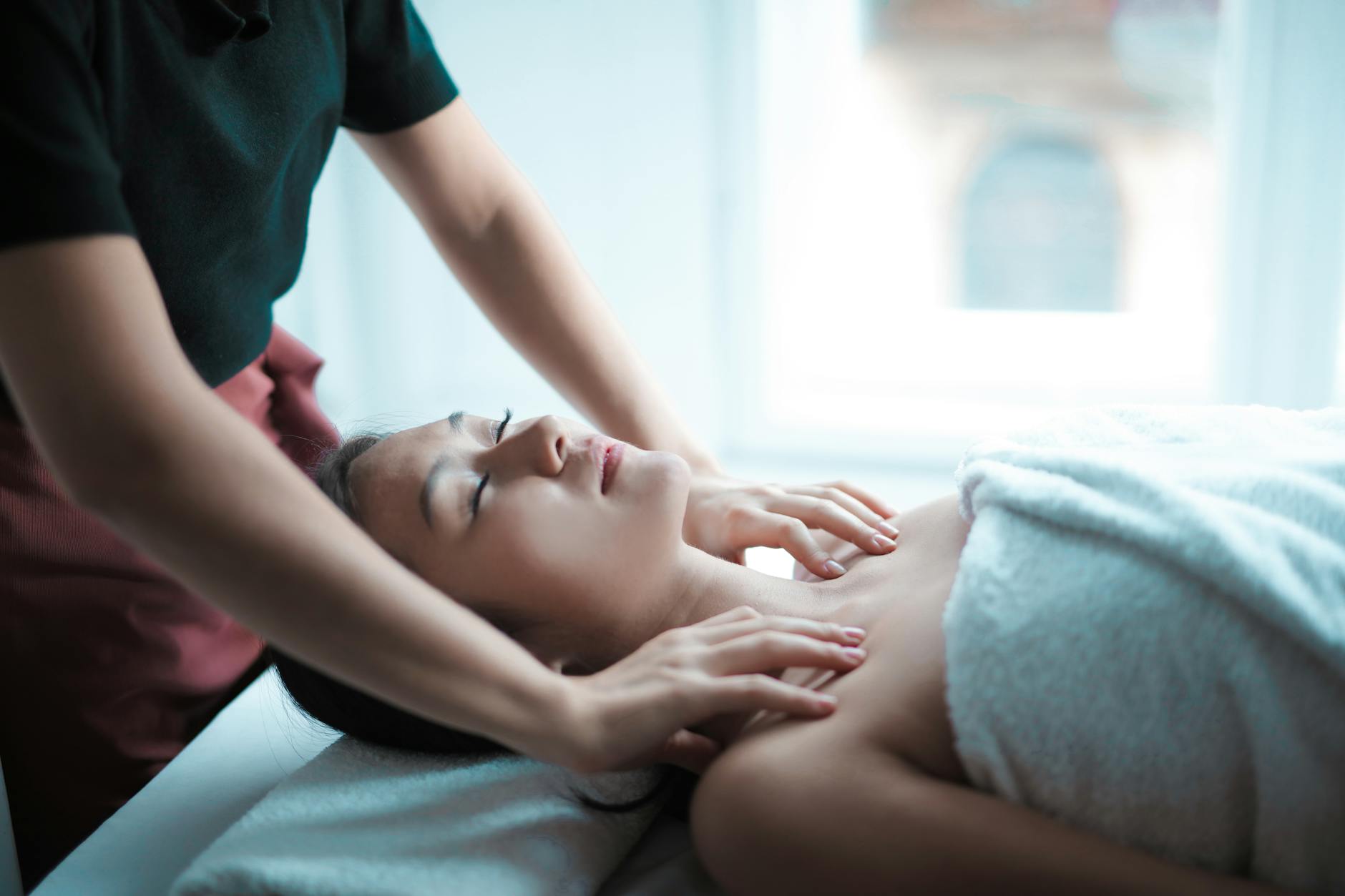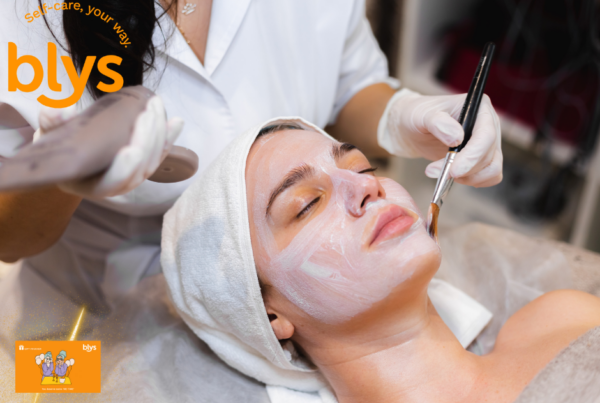Lateral epicondylitis or tennis elbow, as it’s commonly known, is a condition that results from overuse of the forearm muscles, leading to pain around the outer elbow. Deep tissue massage for tennis elbow helps target tight muscle fibers and improves circulation, non-invasively.
This helps in healing and reduces pain to a great extent. Here is a look at how deep tissue massage for tennis elbow can provide relief to individuals.
What is tennis elbow (lateral epicondylitis)?
![]() Tennis elbow, medically known as lateral epicondylitis, is a painful condition that is caused due to repetitive stress on the tendons attached to the lateral epicondyle, which is the bony bump on the outside of the elbow.
Tennis elbow, medically known as lateral epicondylitis, is a painful condition that is caused due to repetitive stress on the tendons attached to the lateral epicondyle, which is the bony bump on the outside of the elbow.
Tennis elbow usually affects individuals who make repetitive motions of the wrist and arm, like tennis players, hence the name. Tennis elbow can also affect painters, plumbers, or even office workers, since these individuals also use their wrists and arms in the same repetitive motion.
Because of these repetitive movements, individuals can experience microtears and inflammation in the extensor carpi radialis brevis (ECRB) tendon. This is what leads to pain and tenderness in the outer elbow area.
Some of the main symptoms of tennis elbow include:
- Aches or a burning pain in the outer elbow region.
- Weakened grip.
- Discomfort that gets worse when individuals extend their wrists to grip objects.
The good thing about a tennis elbow is that it is a manageable condition. In most cases, conservative treatments like physical therapy, proper rest, and manual therapies like massage can help. However, if the symptoms are not treated in time, they can persist for months or even years.
How Deep Tissue Massage Helps Relieve Tennis Elbow Pain
Deep tissue massage helps target deeper muscle and connective tissue layers to break down adhesions, improve circulation, and reduce muscle tension.
When it comes to tennis elbow, deep tissue therapy for elbow pain can effectively address tight forearm muscles and fascia, contributing to tendon strain at the lateral epicondyle.
With the firm pressure applied and the slow strokes used, deep tissue massage helps increase blood flow to the affected area. This promotes better delivery of oxygen and nutrients needed for healing while reducing inflammation.
Apart from this, deep tissue massage for tennis elbow also releases chronic muscle tightness and trigger points that aggravate elbow pain. When done right, deep tissue massage will also help enhance joint mobility and function, allowing for better movement patterns and reduced stress on the tendons.
Top deep tissue massage techniques for tennis elbow treatment
Deep tissue massage has specific techniques that it uses to help an individual. Each of these techniques provides certain benefits for people suffering from tennis elbow.
Cross-fiber friction massage for lateral elbow tendons
One of the many techniques used in deep tissue massage is the cross-fiber friction technique. In this technique, pressure is applied perpendicular to the tissue fibers to promote healing. By using cross-fiber friction massage:
- Massage therapists can specifically target the extensor tendons at the lateral epicondyle. This will help to reduce adhesions and realign collagen fibers during tendon healing.
- Local blood flow can be enhanced, which, in turn, will support tissue repair and reduce chronic inflammation associated with overuse injuries like tennis elbow.
- Scar tissues and fibrotic adhesions can be broken down. These contribute to stiffness and pain, and by breaking them down, tendon flexibility and overall function can be improved.
- The body’s sensory nerves can be better stimulated, which can lead to modulating pain signals and provide long-term relief.
Trigger point therapy for elbow pain relief
Trigger point therapy addresses particular, hypersensitive, and painful points in the body, known as trigger points. In the context of tennis elbow:
- Trigger point therapy can help identify and release “knots” or hyperirritable spots, particularly in the forearm extensors like the extensor carpi radialis brevis (ECRB). This is what often contributes to tennis elbow pain.
- The trigger points in the forearm can refer pain to the elbow, which, when addressed, helps reduce localized and radiating pain by interrupting the pain-spasm-pain cycle.
- Trigger point therapy can restore normal muscle length and strength, improving flexibility and reducing strain on the elbow tendons.
- Trigger point therapy, as a part of deep tissue massage, can provide focused relief in specific muscle areas and promote overall circulation and tissue recovery.
Myofascial stripping techniques for forearm muscles
The use of myofascial stripping techniques as a part of deep tissue massage can be quite beneficial. The technique is a gliding tissue massage technique focused on going deeper into fascia and skeletal muscle layers to manually deactivate myofascial trigger points. These points are hyperirritable, palpable nodules that are found along taut bands of muscle fibers. As a part of deep tissue massage, this technique:
- Applies deep pressure using the thumb or elbow on these points, moving longitudinally along tight muscle fibers, to break up knots and improve tissue mobility.
- Always moves in the direction of the muscle fibers to reduce resistance, encourage elongation, and avoid excessive irritation of inflamed tissue.
- Can be combined with light stretching of the wrist extensors and joint mobilization. This will help maximize the range of motion and relieve tension effectively.
Pressure point hold for painful extensor muscle knots
In this deep tissue massage technique, firm and sustained pressure is applied directly to hypersensitive knots or trigger points in the forearm extensor muscles, particularly the extensor carpi radialis brevis. The technique:
- Helps deactivate trigger points and reduce referred pain.
- Releases tight, contracted muscle fibers.
- Promotes better circulation in the affected area, aiding healing.
- A manual therapy approach without medication or equipment.
- Can be combined with both stretching and myofascial release.
Deep tissue vs. Swedish or sports massage: what’s best for tennis elbow?
In the context of treating tennis elbow or lateral epicondylitis, here’s a look at how deep tissue massage, Swedish massage, and sports massage differ.:
| Type of Massage | Techniques Used | Focus Areas | Benefits of Tennis Elbow | Best For |
| Deep Tissue Massage | Uses slow, firm pressure | Aims to reach deep muscle layers and connective tissue | Reduces chronic muscle tension and trigger points and improves blood flow and promotes tissue healing | Healing chronic pain and persistent muscle knots |
| Swedish Massage | Uses long, gliding strokes; kneading; circular movements | Focuses on superficial muscles and providing relaxation | Mild relief from muscle tension; improved circulation and relaxation | Stress reduction and relief from mild muscle tension |
| Sports Massage | Combines deep tissue, stretching, and joint mobilization | Focuses on muscle groups used in specific sports or repetitive motions | Targets overused muscles; improves mobility and recovery; prevents injury | Athletes or active individuals with elbow overuse |
Individuals with tennis elbow in most cases, have seen to benefit more from deep tissue massage and sports massage when compared to Swedish massage. This is because both deep tissue and sports massage focus on trigger points and muscle adhesions in the forearm extensors, helping with the healing process.
Step-by-step self-massage techniques for tennis elbow relief
 To help manage tennis elbow better, individuals can also opt for self-massage techniques. These are practical and cost-effective ways to manage tennis elbow from the convenience of your home. Here is a look at some self-massage techniques individuals can use.
To help manage tennis elbow better, individuals can also opt for self-massage techniques. These are practical and cost-effective ways to manage tennis elbow from the convenience of your home. Here is a look at some self-massage techniques individuals can use.
Using massage balls and forearm rollers for muscle release
Massage balls and forearm rollers can prove to be effective self-care tools to relieve tension in the forearm muscles, which contribute to tennis elbow. These tools help apply targeted pressure to trigger points and tight fascia, resulting in improved circulation, reduced muscle stiffness, and better healing in overused tendons.
Here’s a step-by-step look at how you can use these tools.
Massage ball:
- First, identify tender areas on the outer forearm, particularly near the elbow.
- Use the massage ball and put it on a table or wall. Press your forearm against it.
- Slowly roll the ball along the muscle. Pause on tight or sore spots for around 20–30 seconds.
- You can adjust your body weight according to the pressure you want on certain spots. Remember to put less pressure on sensitive areas.
- These self-massage techniques should ideally be used for 1 to 2 minutes per muscle group and 1 to 2 times daily.
Forearm Rollers:
- Start by resting your forearm on a flat surface.
- Next, glide the roller back and forth over the extensor muscles, i.e., the top of the forearm.
- Use moderate pressure and increase gradually as tolerated.
- Use it for longer on areas with tightness or soreness.
- Remember to do some light stretching to enhance muscle release.
Targeting tender points in the elbow and forearm
When tender points in the elbow and forearm are targeted, they can help quite well to address the issues that tennis elbow causes.
These spots are often found in the extensor carpi radialis brevis and other forearm extensors. The points can refer pain to the lateral elbow and contribute to perpetual tension. Applying constant pressure or gentle circular massage directly on these points can help reduce local sensitivity, improve circulation, and restore muscle function.
Duration, pressure, and frequency guidelines for self-massage
Here’s a look at aspects like duration, frequency, and pressure that one should keep in mind when indulging in self-massage for tennis elbow.
Duration:
- The ideal duration for self-massage should be 5–10 minutes per session
- A 30–60 second focus on each tender or tight area is suggested.
Pressure:
- It is better to maintain a moderate pressure that is manageable but not cause sharp pain.
- You can use your fingers, knuckles, or massage tools to adjust the pressure.
Frequency:
- 1–2 times daily during flare-ups
- This can be reduced to 3–4 times per week for maintenance or prevention
When to avoid self-massage for elbow pain
It is best to avoid self-massage for elbow pain if you have significant swelling, bruising, recent trauma, or suspected fractures. Self-massage could worsen these conditions and cause more harm than good.
Sharp elbow pain, worsening, or accompanied by numbness or tingling is another reason to avoid self-massage. These issues could indicate nerve involvement or more serious conditions like radial tunnel syndrome. You should also avoid self-massage if there’s an active infection, skin irritation, or inflammation in the area.
When deep tissue massage alone isn’t enough for tennis elbow
Some of the situations where deep tissue massage alone is not enough include:
- When pain lasts for more than 6–8 weeks despite the massage.
- If there are partial tears or advanced tendinopathy, which could require physical therapy, bracing, or other medical treatments.
- When there is swelling or nerve compression, which may require medical attention.
Preventing tennis elbow flare-ups after massage therapy
Though deep tissue massage therapy can significantly reduce pain and tension from tennis elbow, to achieve long-term relief, proper post-treatment care is also required.
Here is a look at how you can prevent flare-ups after massage therapy.
- Avoid repetitive gripping or wrist extension. You can use ergonomic tools when possible.
- You can incorporate exercises approved by your massage therapist for wrist extensors to build tendon resilience.
- Remember to gently stretch the forearm muscles daily to maintain flexibility and reduce tension buildup.
- Warming up the forearm before physical tasks or workouts can also help prevent flare-ups.
Final thoughts: long-term relief from tennis elbow with deep tissue massage
Deep tissue massage for tennis elbow can be a great way to manage and relieve tennis elbow issues as it helps reduce muscle tension, improve circulation, and target trigger points. Book mobile deep tissue massage through Blys and get professional care delivered to your doorstep.
You can combine it with proper exercise, activity modification, and ongoing care to ensure you achieve long-lasting recovery.
FAQs
Is massage therapy good or bad for lateral epicondylitis?
With the right massage therapist by your side, massage therapy can be massage therapy can be quite beneficial for tennis elbow.
What type of massage is best for elbow tendonitis or tennis elbow?
To address tennis elbow, deep tissue massage with the use of cross-fibre technique can be very helpful.
Does deep tissue massage really work for tennis elbow?
Deep tissue massage and its specific techniques can work for tennis elbow quite effectively.
How long does it take for a deep tissue massage to relieve tennis elbow pain?
When done regularly, deep tissue massage can help with tennis elbow in 4 to 6 weeks.
Can I treat tennis elbow with deep tissue massage at home?
You can always indulge in self-massage for tennis elbow at home. However, you can also book a deep tissue massage therapist to address the same at your home too.
Can deep tissue massage make tennis elbow symptoms worse?
Though very rare, with the wrong techniques, deep tissue massage can make tennis elbow worse.




